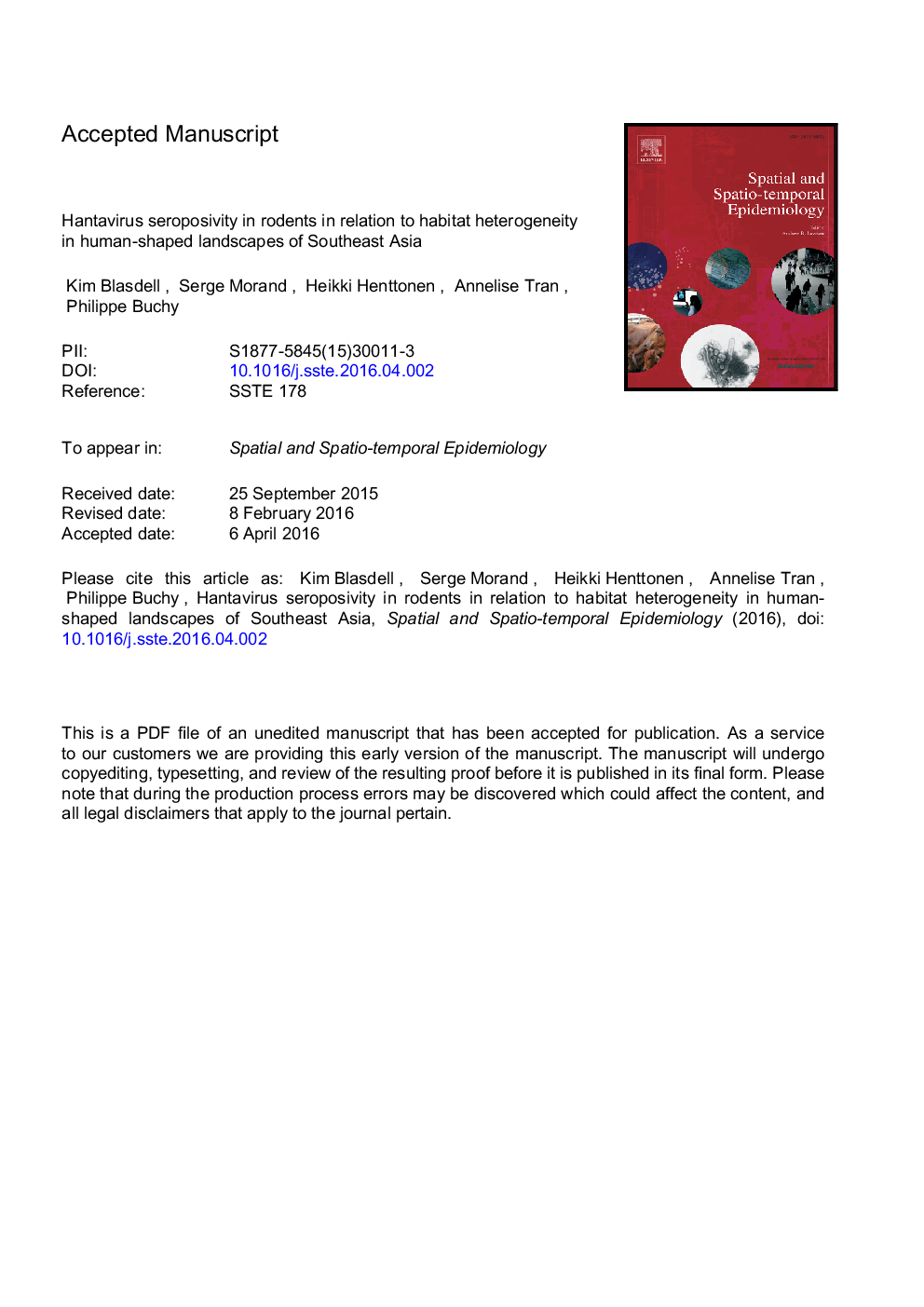| Article ID | Journal | Published Year | Pages | File Type |
|---|---|---|---|---|
| 7495946 | Spatial and Spatio-temporal Epidemiology | 2016 | 29 Pages |
Abstract
To establish how the conversion of natural habitats for agricultural purposes may impact the distribution of hantaviruses in Southeast Asia, we tested how habitat structure affects hantavirus infection prevalence of common murine rodents that inhabit human-dominated landscapes in this region. For this, we used geo-referenced data of rodents analysed for hantavirus infection and land cover maps produced for the seven study sites in Thailand, Cambodia and Lao PDR where they were collected. Rodents were tested by serological methods that detect several hantaviruses, including pathogenic ones. Rodents with a seropositive status were more likely to be found near to agriculture on steep land, and also in environments with a high proportion of agriculture on steep land. These results suggest that in Southeast Asia, hantaviruses, which are often associated with generalist rodent species with a preference for agricultural land, may benefit from land conversion to agriculture.
Related Topics
Health Sciences
Medicine and Dentistry
Public Health and Health Policy
Authors
Kim Blasdell, Serge Morand, Heikki Henttonen, Annelise Tran, Philippe Buchy,
